We have to deal with different types of chemicals, lab equipments and potentially dangerous clinical specimens in the laboratory. So, each laboratory personnel must be aware of common laboratory hazards, accidents and safety measures to prevent them.
Following symbols warn of possible dangers in the laboratory to help the lab professionals keep safe and informed.
1. General Warning
General Warning – It is a warning indicating the presence of hazardous materials in the lab.
2. Biohazard
Biohazard – It provides warning on lab equipment that may contain biohazardous materials like blood samples.
3. Flammable Material Hazard
Flammable Material hazard – Chemicals labeled as flammable have the tendency to ignite and should be store accordingly. Keep the chemicals away from flames, sparks, and oxidizing substances.
4. Explosive Material Hazard
Explosive material hazard – It pertains to chemicals in the lab that has explosive properties.
5. Electrical Hazard
Electrical hazard – Electrical hazards in the lab that can cause mild tingling and death. Devices labeled as electrical hazards should always be turned off when not in use.
6. High Voltage Hazard
High voltage – A symbol symbolizes lightning that can cause serious injury and even death.
7. Toxic Material Hazard
Toxic – It is a generic sign for toxic/poisonous substances and can cause severe damage when inhaled, absorbed, or swallowed.
8. Ionizing Radiation Hazard
Ionizing radiation hazard – It denotes the presence of ionizing radiation, which carries energy to liberate electrons from molecules/atoms and ionizing them. Examples are x-ray equipment, accelerators, and beam cannons.
9. Non-Ionizing Radiation Hazard
Non-ionizing radiation hazard – It warns staff of non-ionizing radiation sources such as UV spectrum, infrared, visible light, radiofrequency, and microwave, to name a few.
10. Low Temperature Hazard
Low temperature warning symbol – It pertains to a cryogenic hazard inside the lab such as cold storage areas where chemicals like liquid nitrogen are stored.
11. Hot Surface Hazard
Hot surface – It warns of the possibility of burn hazards from hot surfaces. This symbol is usually found in lab equipment that produces heat such as lab ovens and autoclaves.
12. UV Light hazard
Ultraviolet light hazard – It warns you of potential dangers such as redness and ulceration of the skin. Exposure to UV light for a long period of time can lead to skin cancer.
13. Oxidizing Material Hazards
Oxidizing agents – They transfer oxygen to another chemical substrate, which means they can give oxygen to flammable substances. They should be store separately from flammable substances. When dealing with oxidizing agents, you should wear proper lab clothing including gloves and eye protection.
14. Corrosive Material Hazard
Corrosive agents – Strong chemicals that corrode into your skin and other substances. A drop of the corrosive agent can cause serious damage. So, wear protective gear at all times when working with corrosive substances.
15. Glassware Hazards
Glassware hazard – It is a physical hazard that has the tendency to become a health hazard, especially if contaminated with toxic and infectious substances.
16. Carcinogen Hazard
Carcinogenic hazard – It pertains to human carcinogens such as methylene chloride, formaldehyde, and benzene. This sign suggests that you have to wear proper personal protective equipment.
17. Irritant
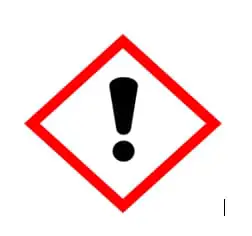
It refers to substances that can irritate the eyes and toxic when inhaled or swallowed. Protective gear must be worn when dealing with substances tagged as irritants.
18. Health hazard
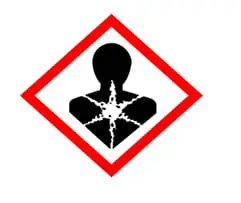
It pertains to substances that can cause serious health damage such as respiratory problems, reproductive toxicity, and carcinogenicity.
19. Gloves required

It suggests that hand protection must be observed, especially when handling hazardous substances. The ideal gloves to use in a lab setting is heat and chemical resistant.
20. Boots Necessary

It means that the usual shoes are not enough for doing certain lab-related works. Lab boots protect your feet from corrosive chemicals.
21. Protective Clothing

A lab coat/protective clothing has to be worn. There are different lab coats and each serves a specific purpose.
22. Safety Glasses

They come in different forms – eyeshields, goggles, glasses, spectacles. They protect the eye from chemical splashes, debris, visible light, or radiation from ultraviolet rays.
23. Breathing mask/Respirators

It must be worn to protect respiratory health. If you see this sign, it means you are working in a place with a potentially contaminated air.
24. Face shield

A face shield must be worn when doing experiments, especially those that handle substances that might cause an explosion.
25. Hearing protection

Noise in the lab can be fairly loud and there are instances when hearing protection has to be worn. Once you see this symbol, it means you will be exposed to a dangerously high decibel and you have to wear proper hearing protection.
26. Eye Wash Station

It shows the location of the eyewash station, which is usually adjacent to the safety shower.
27. Safety Shower

In case of splashes and spills, the lab worker can easily access the shower and prevent further injuries to the eyes and body.
28. Wash hands

You should wash your hands after getting rid of soiled protective clothing, before eating, and before leaving the lab.
29. Food & Drink Prohibited

The environment is not safe for eating and drinking as such could lead to accidental ingestion of harmful substances inside the lab.
30. No Pacemakers or Metallic Implants
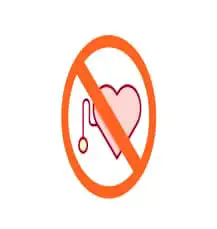
Warning of strong magnetic field hazard caused by lab instruments/equipment that make use of superconducting magnets.
31. Fire Extinguisher

Lab fires are extremely dangerous, which explains why every lab is required to have a proper fire extinguisher.
32. Fire Blanket

It indicates the area where fire blankets are located. It is used to smother the fire to contain and control fire.
33. Fire Hose

It informs persons of the location of the hose connections in the lab.
34. No open flames
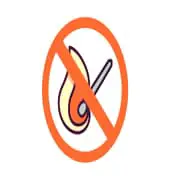
It indicates that risks associated with an open flame device such as lighters, matches, and Bunsen burners.
35. First Aid Station

It indicates the availability of first aid kit.
36. Defibrillator

It shows the location of the lab’s automated external defibrillator so that you can easily locate it in times of emergency such as sudden cardiac arrest.
37. Emergency meeting point
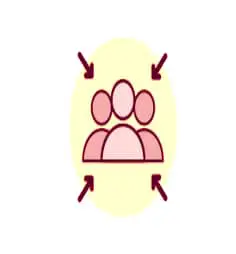
It is a safe place where lab employees and staff will meet in case of an emergency situation.
38. Harmful irritant

It pertains to substances that are not corrosive but may cause discomfort and irritation when exposed to the skin. Examples are chloroform, ammonia, and chlorine.
39. Laser beam hazards
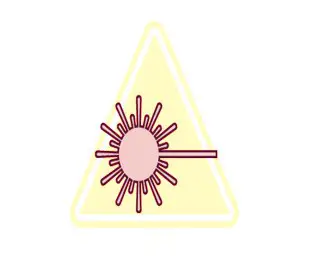
Exposure to laser beams can cause serious injuries. If you see this symbol, it means you have to wear proper protective gear/clothing to protect yourself from the damaging effects of the laser.
40. Optical radiation hazard

It warns lab personnel of equipment that has the ability to produce radiation in the lab like high-powered lasers. If you see this label, it means you have to wear proper gear, especially eyewear.
41. IAEA Ionizing Radiation Hazard
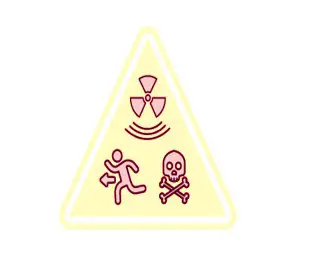
This symbol indicates trefoil radiation hazards, which is important as exposure to such can lead to serious injury and even death. You can commonly see this symbol on the device housing the radiation source.
42. Dangerous to the environment

The substance in question can cause harm to the environment. You can see this symbol in lab chemicals toxic to marine wildlife. Such chemicals should be disposed of properly.
43. Strong magnetic field

It alerts lab personnel of the danger that equipment with a strong magnetic field causes, especially in people with implants and pacemakers.
44. Recycling symbol

It is used in the lab to indicate recyclable items, particularly where such items are gathered and sorted.
45. Inert Gas
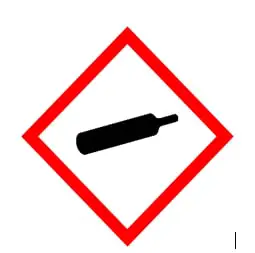
Such type of gas does not undergo a chemical reaction under a given condition. An example is a compressed gas cylinder of Argon or Helium.
46. Compressed Gas

This symbol is routinely used in the lab. It includes liquefied gas, non-liquefied gas, and dissolved gas. The cylinder has a high pressure, which makes it extremely hazardous. The gas that flows in the cylinder may cause injury, fire, or explosion.
47. Recombinant DNA

This lab symbol is commonly found in facilities that handle recombinant DNA.
48. Non-flammable gas

It is a division of gases usually found in the lab. Examples of non-flammable gas are carbon dioxide, air, helium, and nitrogen. However, they can displace oxygen and may cause asphyxiation or even death.
49. Cold room
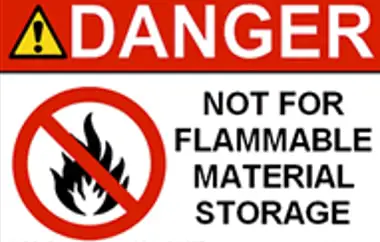
It has a closed air circulation system and is not ideal for storing dry ice, flammables, or liquid chemicals.
50. No Gloves

This sign indicates that gloves must be removed before handling things like lab notebooks, writing instrument, answering phones, holding doorknobs, or before leaving the work area to avoid spreading chemicals.
Also see : Lab safety rules and precautions
References
- https://www.mynewlab.com/blog/a-visual-guide-to-science-safety-symbols-in-a-laboratory/
- https://safety.lovetoknow.com/Slideshow:Lab_Safety_Symbols
- https://cryostarindustries.com/7-common-lab-safety-symbols/
- https://bitesizebio.com/28135/safety-comes-first-common-laboratory-signs/
- https://www.thoughtco.com/science-laboratory-safety-signs-4064202
- https://owlcation.com/stem/Laboratory-Signs-and-Symbols-and-Their-Meanings
- https://www.slideshare.net/aalleyne/lab-safety-symbols-amp-definition-64925053

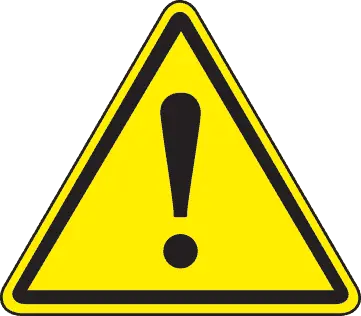
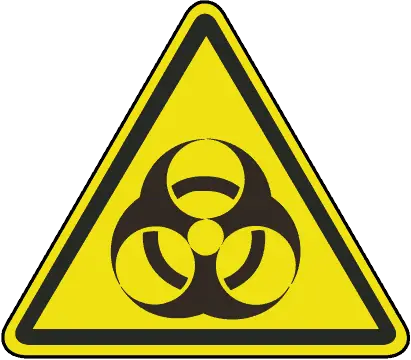
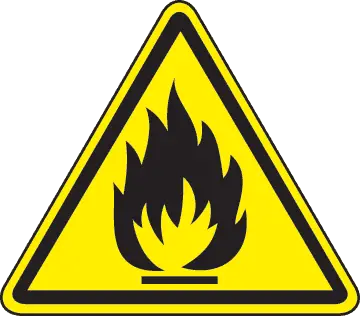


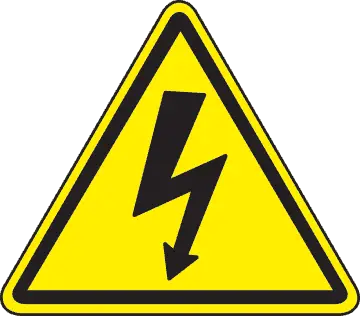
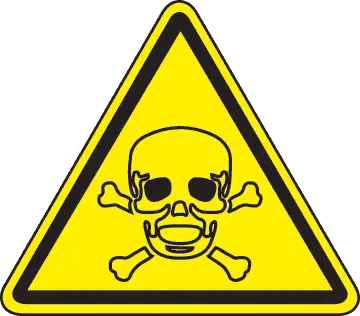



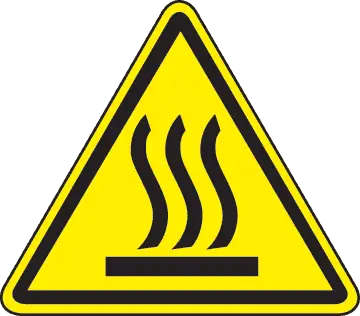



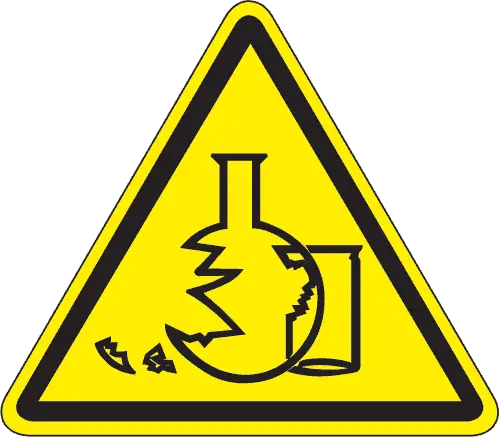

thanks for the information
You’re welcome Moushumi. Keep visiting !
Nice collection and compilation. It is of great use for students and researchers.
GREAT USE FOR STUDENTS…THANKS A LOT…SENDING FRIEND REQUEST ON FB.
every thing it looks good i like it
it looks so nice, it helps me to retrieve my knowledge,thanks
safety is key. thanks
NEUBAUER CHAMBER EXPLANATION IS SIMPLY SUPERB
how do i reference this information in APA style?
thanks so much for all excellent informaion
it is very nice
can you supply references to the sections, i mean here and in general
Thanks for the information. it helped me do my assignment well
thx for the help!